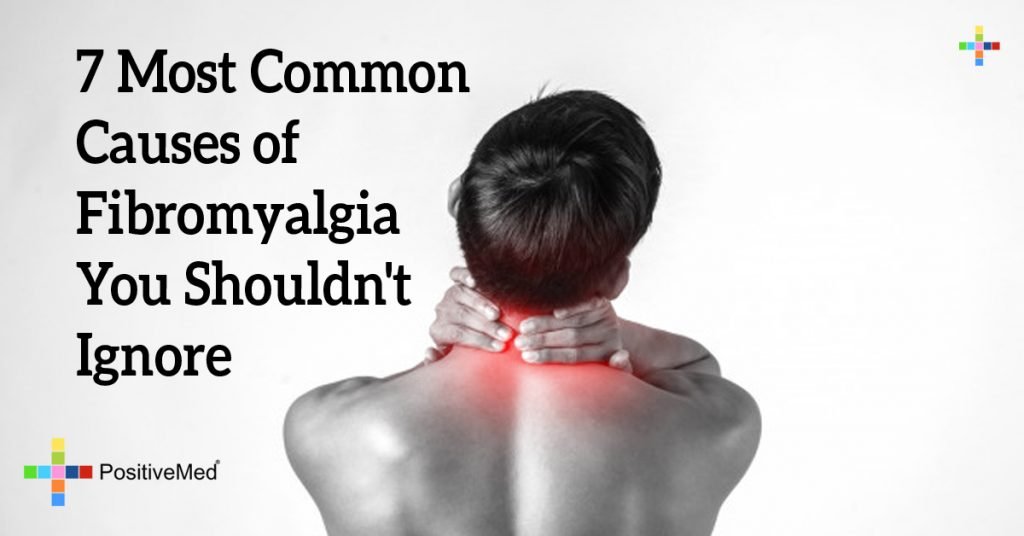
Most Common Causes of Fibromyalgia You Need to Know:
Between 3-6 million people in the United States alone suffer from Fibromyalgia, and doctors are still not sure what causes it. There are a few different schools of thought, and maybe it is a combination of those things, or it could be something entirely different. The most common probable causes agreed on by medical professionals are:
Increased levels of substance P – This substance is found in cerebrospinal fluid and affects our perceptions of, and how we process, pain. People with Fibromyalgia have at least 3 times more substance P than the general population.
Sleep – Some doctors feel lack of quality sleep can lead to onset of Fibromyalgia, when people are deprived of Level 4 sleep for a period of time they develop symptoms of Fibromyalgia. Sleep disturbances and poor quality sleep are hallmark symptoms of Fibromyalgia, it may be hard to say which comes first for some people.
Genetics – Fibromyalgia often runs in families, there is a possibility that the disease process is brought on by a genetic mutation.

Environmental – Some feel that high chemical exposure and dietary habits can lead to certain diseases, this can also explain some family connections for those in the same area.
Infections and Illnesses – Some of these appear to trigger latent Fibro, and be the cause.
Physical or emotional trauma – PTSD has been linked to Fibromyalgia, as has chronic pain, the theory behind this is that nerves are on edge for so long they become permanently disrupted.
Illness and Trauma Together – The book ‘Fibromyalgia for Dummies’ links one cause to be an accident involving long-term physical pain followed by an infection can cause Fibromyalgia.
There are risk factors for obtaining the disease such as being female, family history, and presence of rheumatic disease. Many diagnosed with Fibromyalgia also have Lupus or Rheumatoid Arthritis.
Treatment for this disease is varied, but has many common elements. For many the most needed treatment is pain control.
Pain – This is between you and your doctor, OTC analgesics like Tylenol, Aleve, and Motrin are commonly used. Doctors often prescribe Tramadol, Lyrica, and Cymbalta, sometimes narcotics. Natural remedies include turmeric, fish oil, and capsicum. Massage, gentle stretching like pilates and yoga, and aerobic exercise 3 times a week are highly recommended. Muscle relaxers are of benefit to many, Flexeril and Robaxin are common. If you live somewhere that has medical marijuana available, many with Fibro find relief from this herbal remedy. There is also acupuncture, biofeedback, tender point injections, and gabapentin. Mirapex is usually used for Parkinson’s disease but has proven helpful with Fibro pain as well.
Anti-depressants – Low doses of anti-depressants are often prescribed. This is useful for depression, pain and sleep.
Anti-anxiety– A common symptom of Fibro, usually prescribed by doctor on diagnosis.
Therapy – This is a tough disease to handle, you rarely can make plans or predict how your day will be, a flare can happen at any time and put you in bed for a day or 2, therapy helps deal with the inevitable frustration of having an invisible disease.
Support groups – Easiest to find on the internet, its helpful to talk to people who understand what you’re going through. Facebook has several pages and groups available, blogs, and meetings in larger cities.
Diet – There is a whole article devoted just to this. Avoid processed foods, artificial sweeteners, corn syrup, and anything you can’t pronounce. Focus on whole, organic foods as much as possible, whole grains, and lean proteins.
There is no cure, but symptoms can be helped in a variety of ways. Unfortunately you can do everything right and still have flares, or bad days, but doing everything in your power to stay healthy gives a sense of control, and that means a lot in an uncontrolled world.





